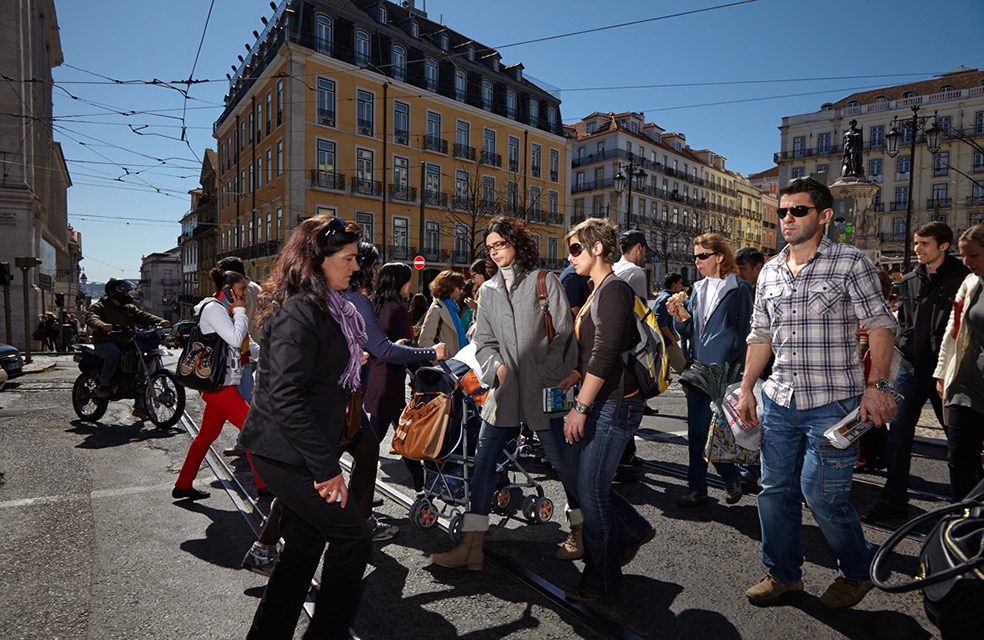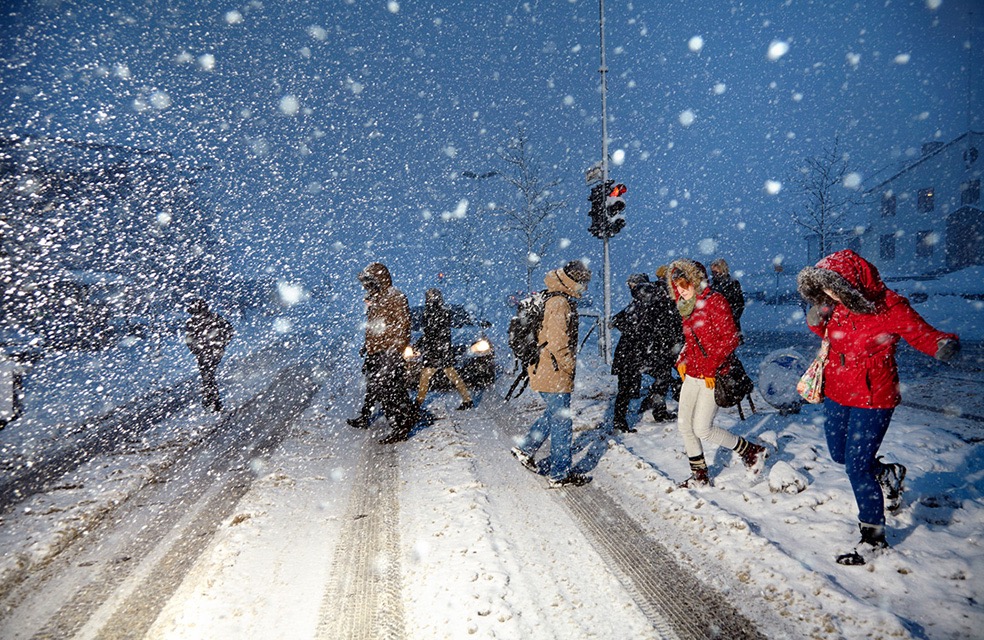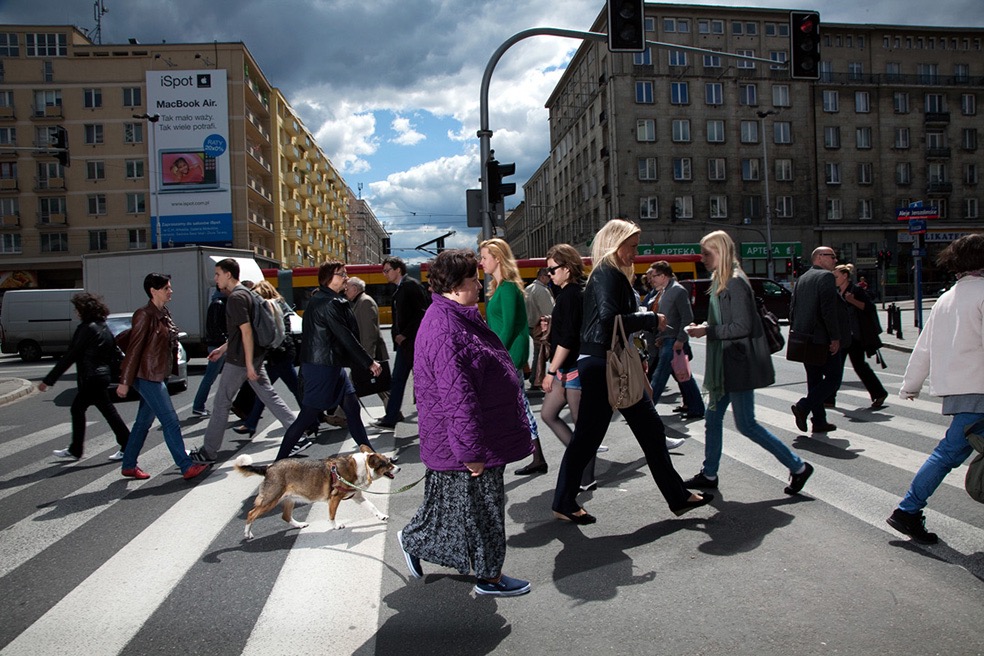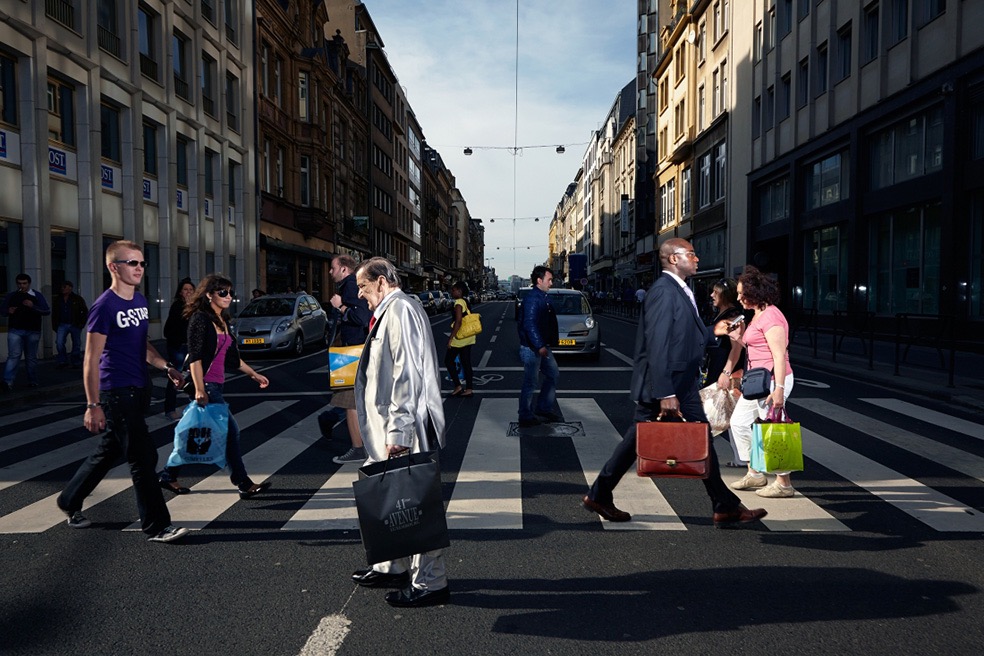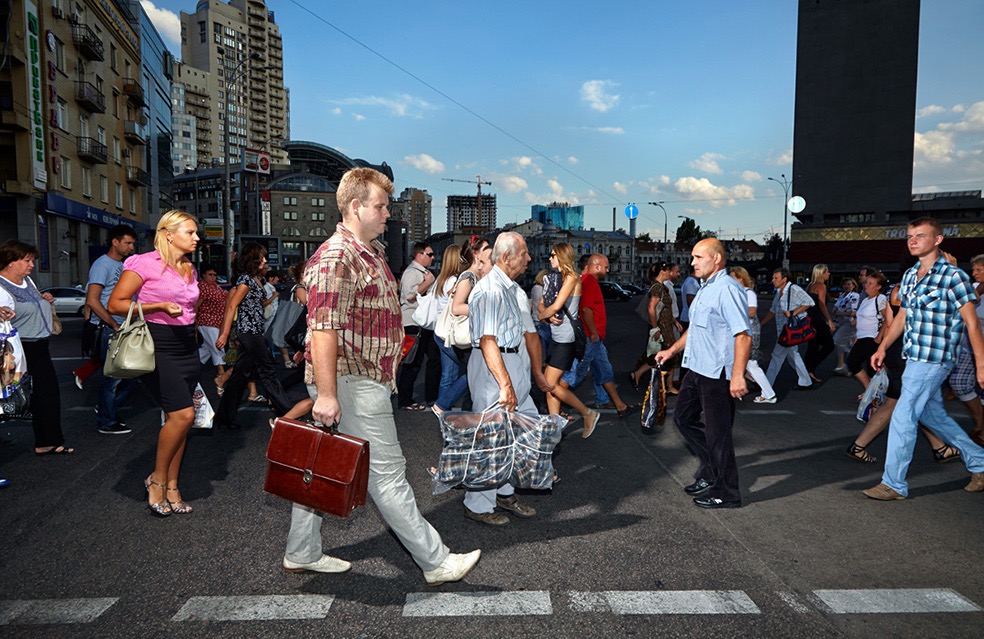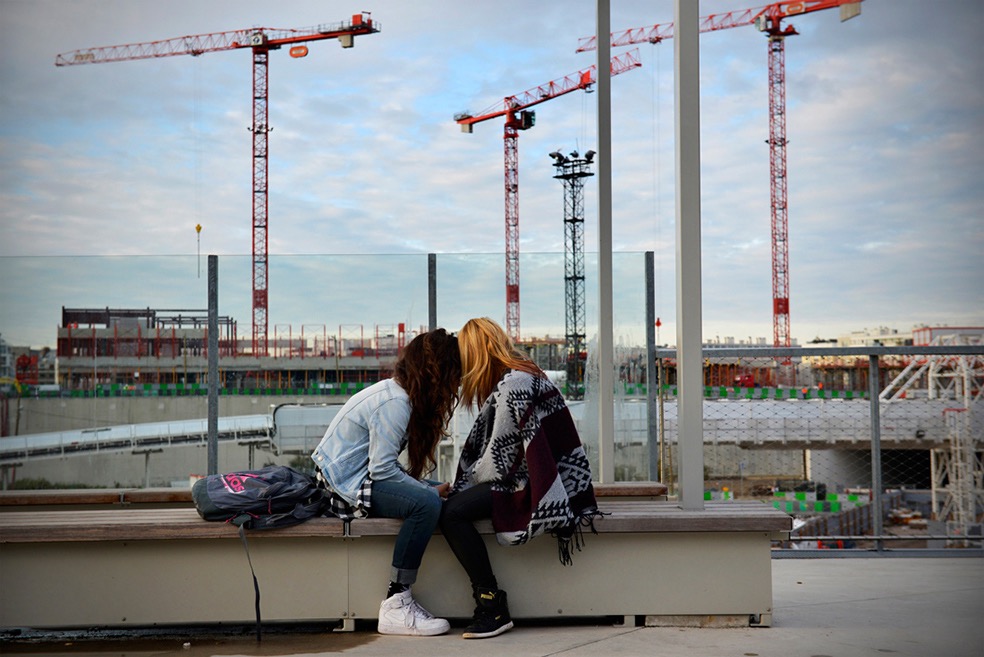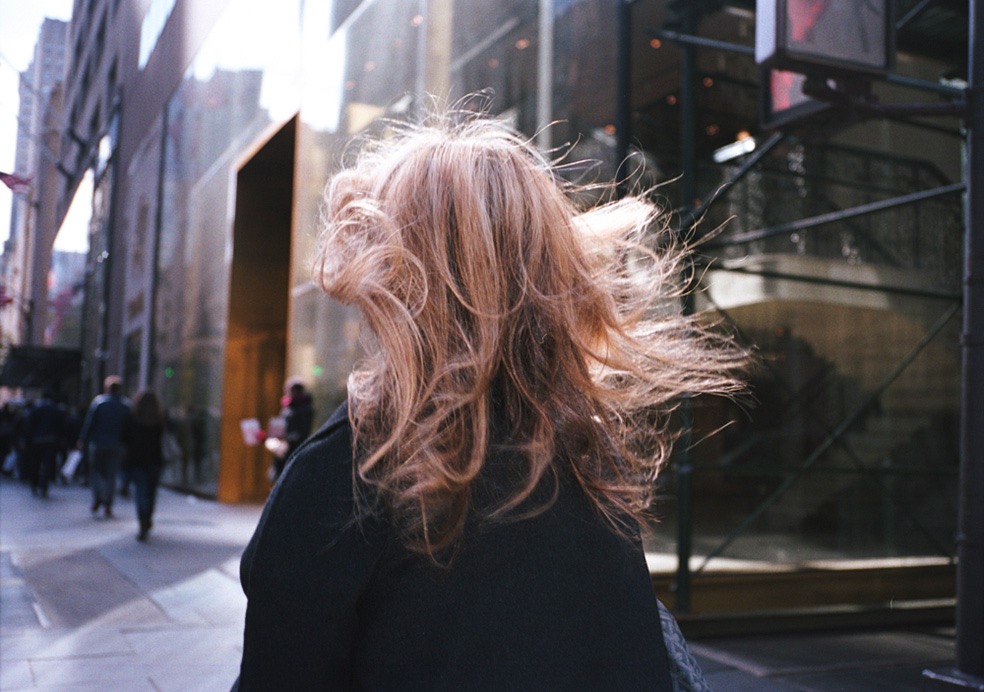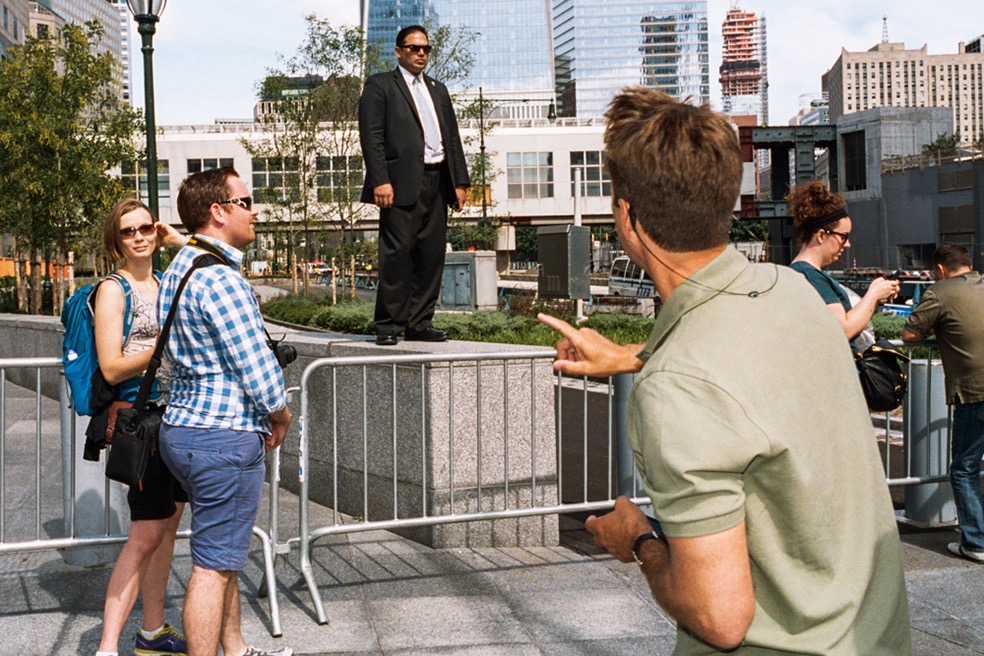Living round the corner from Muntplein in Amsterdam meant I used to pass it several times a day. And it would often cheer me up just to see the life going on in those few square metres. I like watching crowds. I started studying people crossing at the intersection, observing their interactions and the way they moved. Initially I experienced them as acting in groups, organically, in orderly or in chaotic fashion. But within the dense movement one or more individuals would soon stand out from the crowd.
Sometimes I would be reminded of Philip-Lorca diCorcia’s work. In his series ‘Heads’ he captured city life, using an infrared-activated shutter linked to a strobe light. Camera and flash were hidden somewhere in public. There was no photographer: people triggered the shutter with their movements, unknowingly recording their actions. I was deeply impressed by the resulting images of such natural behaviour, such a natural state of mind; of people totally absorbed in their own world.
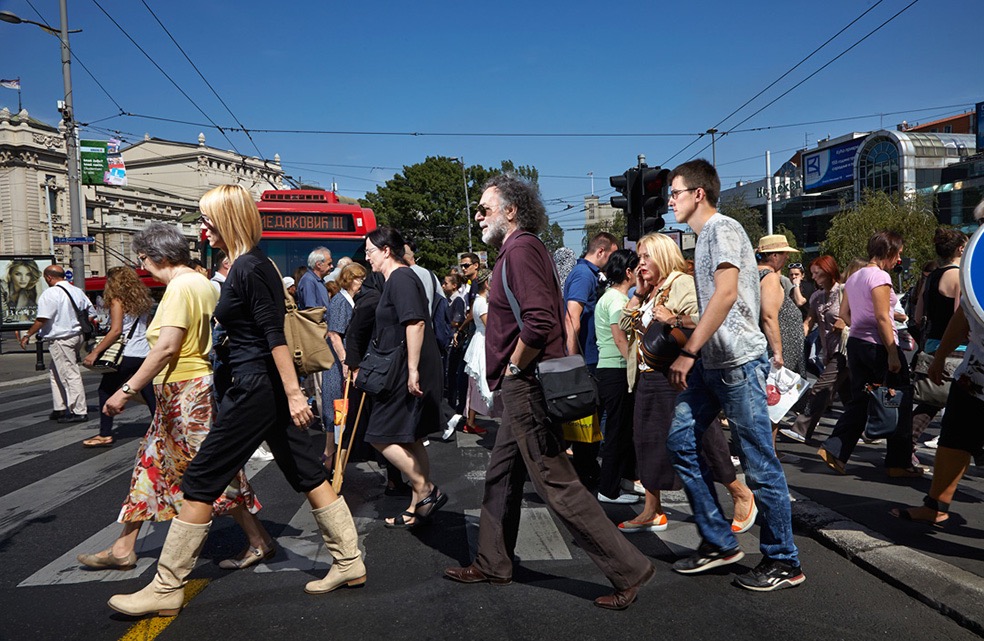
During a stay in New York I was struck by the effect of sunlight reflecting off the plate glass buildings around me: people were illuminated from several angles and acquired multiple shadows. This produced an almost surrealistic atmosphere. Unfamiliar, otherworldly. In my work I wanted to put people in the spotlight, like actors on a stage. More than that, I wanted a spotlight to illuminate them. This light, coming from a different angle, would make them stand out; and emphasise the chance encounters that took place; single moments frozen in time. But it would be important not to interfere in people’s actions, to remain unnoticed as far as possible.
The pictures I then took in Amsterdam expressed something I could recognise as a typical Amsterdam atmosphere: people showing an almost brash attitude, spontaneous and direct; sometimes ignoring the rules. It made me wonder if I could translate this experiment to other situations, to other cities. Shortly afterwards I visited Madrid and Berlin, London and Paris. I tried to capture moments that would portray the atmosphere, interactions and attitudes possibly characteristic of those cities. Could I make these things visible? I was often surprised. And after that I wanted to extend the series, to cover all the capitals of Europe. Through social media Europe shrank to a manageable size. Text messages and e-mails enabled me to contact people who could help find local photography assistants and accommodation. Crowd-funding helped raise the funds for the project.
To comprehend Europe as a whole, however, was a huge challenge. The last few years have been turbulent. And what did I really know of the different countries? What I knew came from history, reading, film and television, the press. What did I know about their capital cities? Some I had visited. Many I had not. I wondered if their citizens would be able to recognise themselves as I could recognise my fellow Amsterdammers. But that’s what I hoped to achieve, as I set out to portray inhabitants of each of the 42 European capitals.
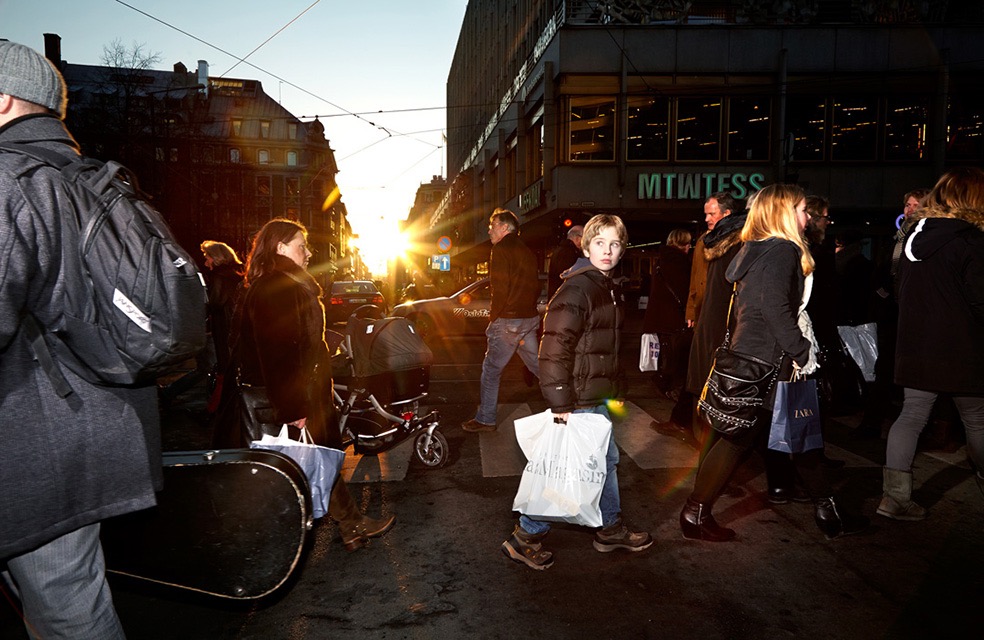
When we arrive in unknown territory we tend to focus on what is different, or what conflicts with our own customs. We don’t necessarily notice the familiar. Only after a while do we recognise what we have in common. But globalisation is everywhere. That is plain to see in any general street view. Cultural characteristics have faded and similarities are all around us. We Europeans have begun to look more and more alike; wearing the same clothes, carrying the inevitable smartphone; seeking the same luxuries, the same amusements. We have identical roads and shopping streets, the same infrastructures. Our urban surroundings have become increasingly similar. And so has our behaviour.
For my project it was important to restrict the field of view, to focus on a particular activity. I chose to observe people at a pedestrian crossing in a busy street. Thus I was set: for Crossing Europe.
To me it did not matter if the countries were EU members, potential members or non-members. Other people were often surprised: they assume Europe covers some 30 countries. But Europe is more, a lot more, than the EU. The Balkans and the Baltic are part of the continent too, for instance. The EU started with the creation of a trading community; for commercial benefit. More and more European countries have joined for economic reasons. But is there something else that unites us as Europeans? Something other than just sharing a continent and seeking economic profit? The European Union is an idea, but is it an idea that can be put into practice?
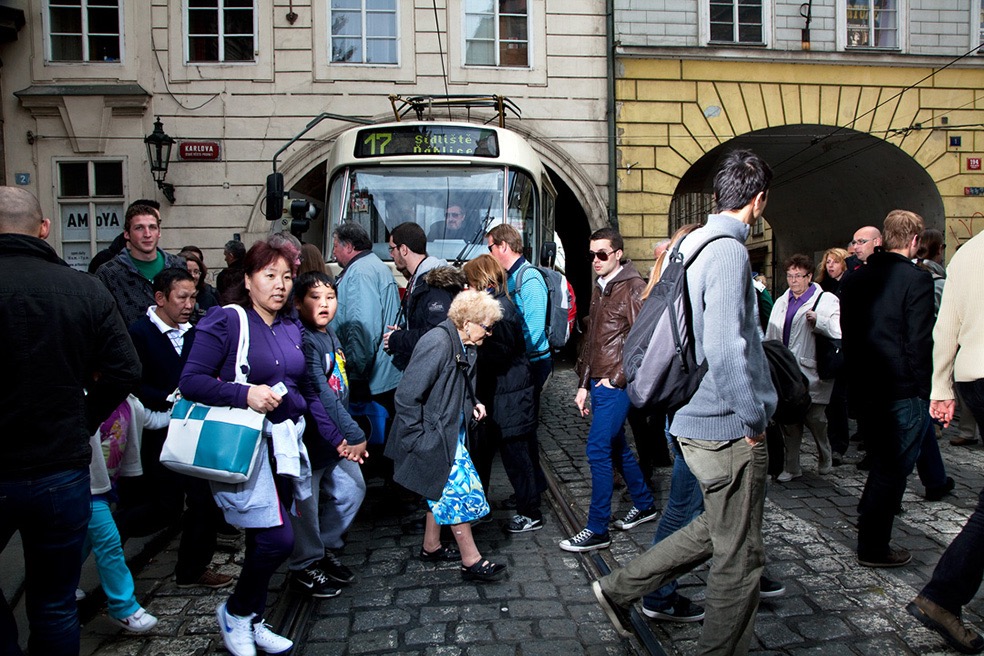
The specific moments that I chose to photograph were when people needed to cross the street; somewhere, anywhere. That would give me a starting point from which to learn how people behaved. I saw them hesitate or hurry, being irritated or waiting patiently; following the rules or deliberately ignoring them. Where was their focus? Within themselves or out on their own personal goal. Were they paying attention to the other people around them? Was there some kind of communication? Did they interact intentionally? What was chance or coincidence? It takes several seconds to walk over to the other side, enough time for plenty of minor encounters. And if you looked closely, you saw many little stories being told: people reacting to people. Just as in the wider world. A crossing: a metaphor for human life.
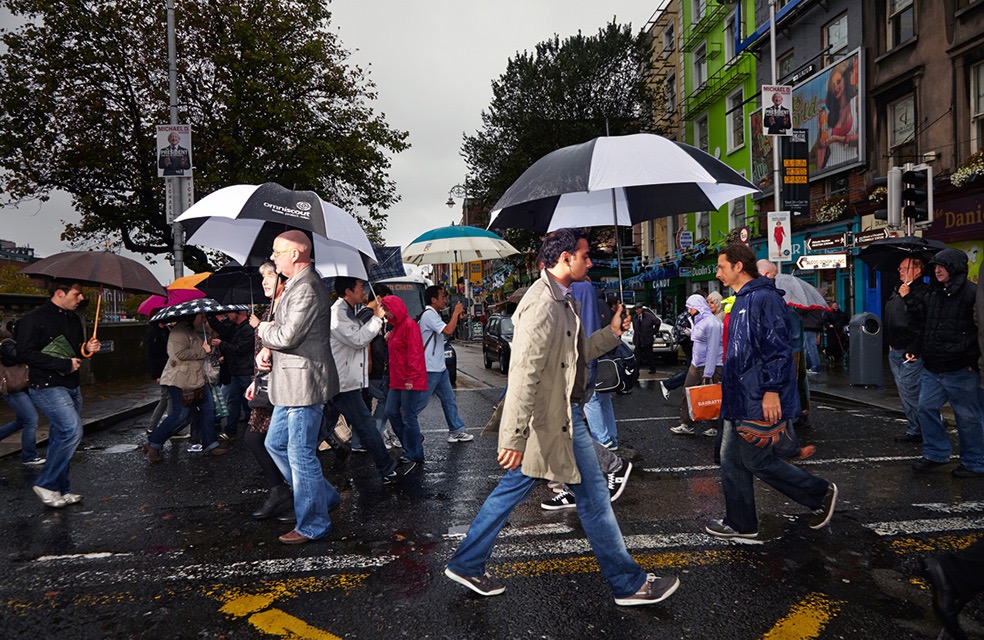
Poike Stomps, Zeist 1977, the Netherlands, graduated in photography BDES (2006) at HKU Academy of Art Utrecht. Now working as a social documentary photographer in Amsterdam, exploring human behavior / interaction, doing long term projects and assignments. He works in the fields of portrait, documentary, reportage and art photography. He creates series exposing the way we handle death, about multicultural street life in Utrecht, on life on The Faroer Islands, or life with dementia. The last 12 years he captured the life with his father. Besides his personal work he hits his camera at shadows of passing airplanes trying to catch the impact the phenomenon may have on people and animals. And he observes people crossing street in his 42 European Capital Crossings project.
Website: poike.nl
